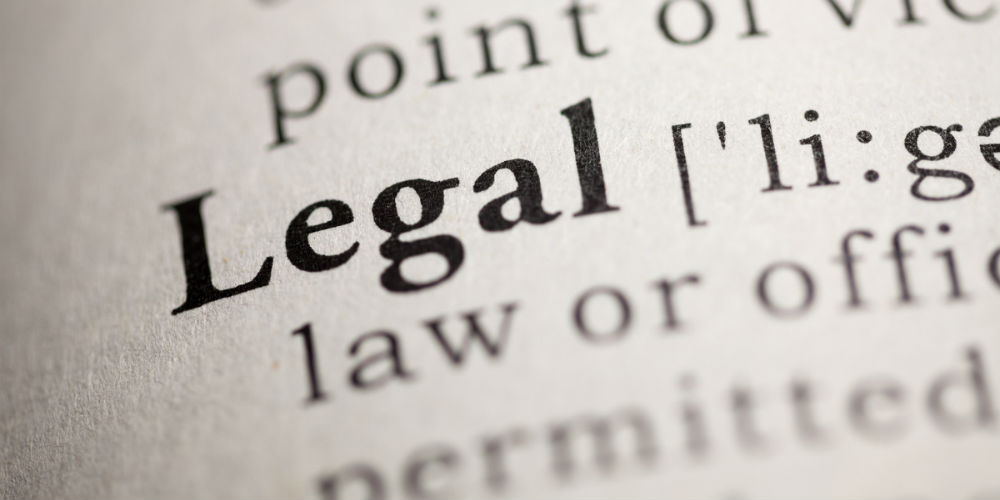At present, credit unions are not required to know the identity of the individuals who own and/or control their legal entity customers or members. FinCEN and the federal law enforcement agencies have long seen this as a weakness in the BSA/AML programs that financial institutions are required to administer. On May 12, 2016, FinCEN introduced a new rule designed to address this concern by requiring financial institutions to look beyond the legal entity itself and to identify the individuals who own and/or control these legal entities.
FinCEN’s rule requires that financial institutions establish and maintain written procedures that are designed to identify and verify the beneficial owners of their legal entity customers/members. In order to meet this requirement, you must know what FinCEN means when it talks about beneficial owners and legal entities.
Beneficial Owners
There are two prongs to the test for determining whether someone is a beneficial owner of a legal entity with an account at your credit union. An individual can be a beneficial owner based on his/her ownership position with the legal entity OR by having control over the legal entity.
Prong 1: The Ownership Test
A beneficial owner is an individual who directly or indirectly owns at least 25% of the equity interests in the legal entity member.* This ownership can come through any type of contract arrangement, understanding, relationship, or other means.
When you examine legal entity accounts at your institution, you may find that there is more than one beneficial owner based on the ownership test. Conversely, you may not find any owners that meet the 25% test.
*You are permitted, if you wish, to set a lower equity ownership threshold if desired for risk assessment purposes.
Prong 2: The Control Test
A beneficial owner is also a single individual who has the responsibility to control, manage or direct the legal entity member. For example, a beneficial owner might be an executive officer or a senior manager, or any individual who routinely performs similar functions. This list could include, but is not limited to:
- CEOs;
- CFOs;
- COOs;
- Managing members;
- General partners;
- Vice president; or
It is certainly possible that the same individual may meet the definition under both prongs of the test. However, there must always be one person identified as the beneficial owner under the control prong.
As a side note, the new rule notes that if a trust owns at least a 25% equity interest in a legal entity, the trustee should be identified as a beneficial owner. If an entity that is exempt from the definition of a legal entity (see below) has an ownership interest of at least 25% in the legal entity, then you are not required to identify anyone from that exempt legal entity as a beneficial owner.
Legal Entities
Next, you need to know what is meant by a legal entity member. For the purpose of this rule, a legal entity could be a:
- Corporation;
- Limited liability company or other entity;
- Business trust that is created by the filing of a public document with the Secretary of State (or similar office),
- General partnership; or a
- Similar entity formed under the laws of a foreign jurisdiction opening the account.
As is typically the case, the list of entities that are not considered to meet the definition is longer and includes:
- Natural persons opening accounts on their own behalf;
- Sole proprietorships;
- Unincorporated associations;
- Financial institutions that are either federally or state regulated;
- Trust accounts, other than statutory trusts created by a filing with a Secretary of State or similar office (although for trust accounts financial institutions are still expected to verify the identity of the trustees and for revocable trusts to gather information regarding the settlor, grantor, trustee and other persons with the authority or control over the account);
- Issuers of a class of securities registered under section 12 of the Securities Exchange Act of 1934 or that are required to file reports under section 15(d) of the Act;
- Investment companies as defined in section 3 of the Investment Company Act of 1940, that are registered with the SEC;
- Investment advisors, as defined in section 202(a)(11) of the Investment Company Act, that are registered with the SEC;
- Exchanges or clearing agencies as defined in section 3 of the Securities Exchange Act, that are registered with the SEC;
- Any other entity registered with the SEC;
- Registered entities, commodity pool operators, commodity trading advisors or major swap participants as defined in section 1a of the Commodity Exchange, that are registered with the SEC;
- Public accounting firms registered under section 102 of the Sarbanes-Oxley Act;
- Bank holding companies, as defined in section 2 of the Bank Holding Company Act of 1956 or savings and loan holding companies as defined in section 10(n) of the Home Owners’ Loan Act;
- Pooled investment vehicles that are operated or advised by a federally or state-regulated financial institution;
- State-regulated insurance companies;
- Financial market utilities designated by the Financial Stability Oversight Council under Title VIII of the Dodd-Frank Act;
- Foreign financial institutions established in jurisdictions where the regulator of the institution maintains beneficial ownership information for the institution;
- Non-US governmental departments, agencies, or political subdivisions that engage only in governmental rather than commercial activities; and
- Any legal entity only to the extent that it opens a private banking account subject to section 1010.620 of the Bank Secrecy Act.
Lastly, there is also a list of legal entities that are partially subject to the definition of a legal entity. This means that these entities can be beneficial owners if they meet the test of exercising control over the legal entity, but are not to be identified as beneficial owners based on their ownership interest.
These entities are:
- Pooled investment vehicles that are operated or advised by a covered financial institution; and
- Nonprofit corporations or similar entities that have filed organization documents with the appropriate State authority.
Now that you know what FinCEN defines as a beneficial owner and a legal entity, you can review the legal entity accounts at your institution and begin to develop relevant due diligence procedures. Remember, the new rule is effective July 11, 2016, and compliance becomes mandatory starting May 11, 2018.
For more information, read the complete text of the new rule.







